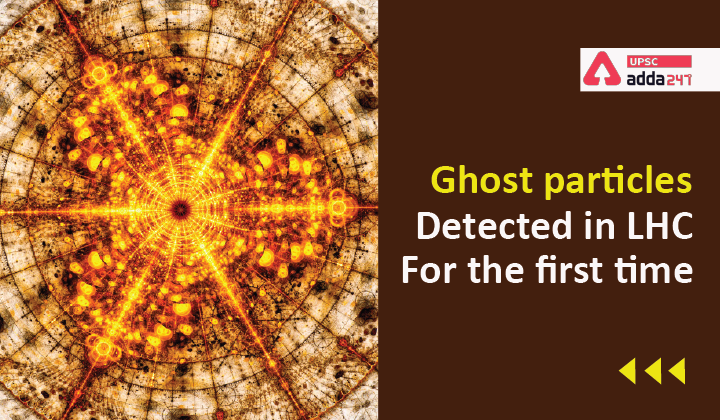Table of Contents
Ghost Particles Detected: Relevance
- GS 3: Science and Technology- developments and their applications and effects in everyday life.
Ghost Particles Detected: Context
- Recently, for the first time, researchers have detected neutrino candidates produced by the Large Hadron Collider (LHC) at the CERN facility.
Ghost Particles Detected: Key points
- In what could be referred as a major milestone in particle physics, researchers have reported observing six neutrino interactions during an experiment at the LHC.
- Prior to this project, no sign of neutrinos has ever been seen at any particle collider, and not just at LHC.
Ghost Particles Detected: Significance
- This significant breakthrough is a step toward developing a deeper understanding of these elusive particles and the role they play in the universe.
- Detecting collider neutrinos provides access to neutrino energies and types that are rarely seen elsewhere.
Neutrinos definition
- Neutrinos are subatomic particles that have a very small mass like an electron. Neutrinos, however, have no electrical charge. This characteristic of neutrinos makes them extremely difficult to detect.
- Neutrinos are actually everywhere. They’re one of the most abundant subatomic particles in the Universe.
- As they carry no charge and have almost zero mass, they stream through the Universe at almost the speed of light, and barely interact with it at all.
Ghost particles meaning
- Billions of the things are streaming through us right now. To a neutrino, the rest of the Universe is basically incorporeal; that’s why they’re also known as ghost particles.
LHC working
- The LHC—which includes four main detectors: ALICE, ATLAS, CMS and LHCb—generally works by colliding two high-energy particle beams with one another close to the speed of light.
- When the charged particles, like protons, smash into one another at such high speeds, the energy of the impact becomes matter in the form of new particles or subatomic particles.
- So, the LHC can essentially “produce” subatomic particles.
What this detection of neutrinos revealed?
This reported detection of neutrino interactions reveals two major things/
- First, it verified that the position forward of the ATLAS interaction point at the LHC is the right location for detecting collider neutrinos.
- Second, the efforts demonstrated the effectiveness of using an emulsion detector to observe these kinds of neutrino interactions.
What is an emulsion detector?
- FASERnu, a neutrino subdetector, is what is known as an emulsion detector.
- Lead and tungsten plates are alternated with layers of emulsion: During particle experiments at the LHC, neutrinos can collide with nuclei in the lead and tungsten plates, producing particles that leave tracks in the emulsion layers.





 TSPSC Group 1 Question Paper 2024, Downl...
TSPSC Group 1 Question Paper 2024, Downl...
 TSPSC Group 1 Answer key 2024 Out, Downl...
TSPSC Group 1 Answer key 2024 Out, Downl...
 UPSC Prelims 2024 Question Paper, Downlo...
UPSC Prelims 2024 Question Paper, Downlo...





